#samnite warriors
Explore tagged Tumblr posts
Text

I always get excited about drawing.😭✨
8 notes
·
View notes
Text

The walnut tree of Benevento is a legendary ever green tree presumably located of the Riverbank of the Janaras, the place on the bank of the Sabato river. According to folklore the tree was an ancient, leafy walnut tree consecrated to the Germanic god Odin situated near Benevento where a community of Lombards settled in territories originally inhabited by the Samnites.
Legend has it that witches, called Janaras, at night anointed their armpits or chests with ointment and took flight by uttering a magic phrase riding a sorghum broom to reach the Benevento Walnut Tree, where sabbaths and pagan rites were held.
Legend traces its origins to earlier pagan cults existing in the area, particularly the cult of Isis, the Egyptian goddess of magic, whose worship had spread in Roman times through syncretism with other goddesses such as Diana and Hecate.
Other origins of the legend are linked to the Lombard cult of the god Wotan, according to which it was customary to hang the skin of a goat from the branches of the sacred tree so that worshippers could gain the god's favor by frantically running around the tree on horseback, tearing off shreds of skin that they then ate.
Benevento's Christians would have connected these frenzied rites with their existing beliefs about witches: in their eyes women and warriors were witches, the goat was the embodiment of the devil, and the shouting was orgiastic rituals.
#witchcraft#witchblr#paganism#witches of tumblr#italian witchcraft#italian folklore#italian traditions#traditional witchcraft#folk traditions#folklore#sacred tree#sacred places#history of witchcraft#stregheria#italianwitch#strega
73 notes
·
View notes
Text
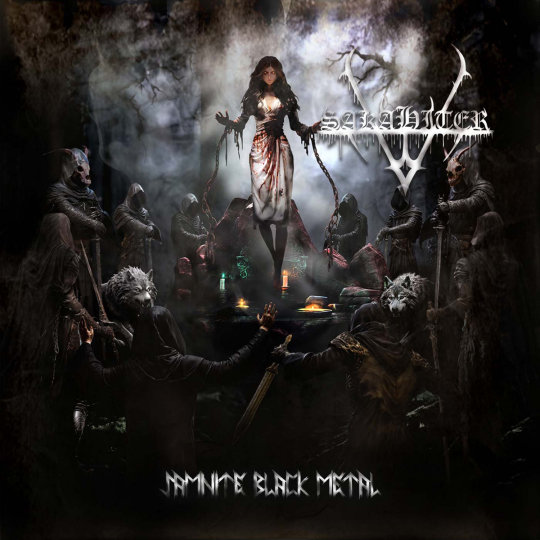
Sakahiter - Samnite Black Metal
Black/Death Metal from Campobasso, Italy
The album "Samnite Black Metal" delves into the dark and ancestral rites of the Samnites, an ancient warrior people of southern Italy. Each track is a descent into a sonic abyss of primal fury, evoking the mysticism and brutality of their rituals tied to the forces of nature. The dark and powerful soundscapes reflect the courage and rage of a people who fought to their last breath, invoking arcane deities and practicing ancient rites of war and sacrifice. A sonic experience that blends the brutal ferocity of death metal with the occult atmosphere of black metal, where the line between life and death dissolves, and the Samnites rise as lords of a lost world steeped in magic and darkness.
1. Ver Sacrum 04:52 2. Cutilia (Sacred lake) 05:47 3. Hirpus 06:29 4. Kerres 03:33 5. (Rite of) Caereris Mundus 05:23 6. Lex Sacrata 06:10 7. Mors Vitam Vicit 07:17 8. Samnite Black Metal 04:02 9. Outro 03:19
Release date: February 7th, 2025 via @timetokillrecords
@sakahiter
#italienblackmetal#sakahiter#blackmetal#blackmetalband#blackmetalmusic#melodicblackmetal#atmosphericblackmetal#symphonicblackmetal#blackeneddeathmetal#blackdeathmetal#deathmetal#oldschoolblackmetal#brutalblackmetal#extremeblackmetal#rawblackmetal#samniteblackmetal#occultblackmetal#darkblackmetal#supporttheunderground#undergroundblackmetal#blackmetalrecords#blackmetalpromotion#blackmetalrelease#newalbum#newblackmetalalbum#blackmetalalbum#2025release#albumcover#bandcamp#Bandcamp
3 notes
·
View notes
Text
Events 8.19 (before 1930)
295 BC – The first temple to Venus, the Roman goddess of love, beauty and fertility, is dedicated by Quintus Fabius Maximus Gurges during the Third Samnite War. 43 BC – Gaius Julius Caesar Octavianus, later known as Augustus, compels the Roman Senate to elect him Consul. 947 – Abu Yazid, a Kharijite rebel leader, is defeated and killed in the Hodna Mountains in modern-day Algeria by Fatimid forces. 1153 – Baldwin III of Jerusalem takes control of the Kingdom of Jerusalem from his mother Melisende, and also captures Ascalon. 1458 – Pope Pius II is elected the 211th Pope. 1504 – In Ireland, the Hiberno-Norman de Burghs (Burkes) and Cambro-Norman Fitzgeralds fight in the Battle of Knockdoe. 1561 – Mary, Queen of Scots, aged 18, returns to Scotland after spending 13 years in France. 1604 – Eighty Years War: a besieging Dutch and English army led by Maurice of Orange forces the Spanish garrison of Sluis to capitulate. 1612 – The "Samlesbury witches", three women from the Lancashire village of Samlesbury, England, are put on trial, accused of practicing witchcraft, one of the most famous witch trials in British history. 1666 – Second Anglo-Dutch War: Rear Admiral Robert Holmes leads a raid on the Dutch island of Terschelling, destroying 150 merchant ships, an act later known as "Holmes's Bonfire". 1692 – Salem witch trials: In Salem, Province of Massachusetts Bay, five people, one woman and four men, including a clergyman, are executed after being convicted of witchcraft. 1745 – Prince Charles Edward Stuart raises his standard in Glenfinnan: The start of the Second Jacobite Rebellion, known as "the 45". 1745 – Ottoman–Persian War: In the Battle of Kars, the Ottoman army is routed by Persian forces led by Nader Shah. 1759 – Battle of Lagos: Naval battle during the Seven Years' War between Great Britain and France. 1772 – Gustav III of Sweden stages a coup d'état, in which he assumes power and enacts a new constitution that divides power between the Riksdag and the King. 1782 – American Revolutionary War: Battle of Blue Licks: The last major engagement of the war, almost ten months after the surrender of the British commander Charles Cornwallis following the Siege of Yorktown. 1812 – War of 1812: American frigate USS Constitution defeats the British frigate HMS Guerriere off the coast of Nova Scotia, Canada earning the nickname "Old Ironsides". 1813 – Gervasio Antonio de Posadas joins Argentina's Second Triumvirate. 1839 – The French government announces that Louis Daguerre's photographic process is a gift "free to the world". 1848 – California Gold Rush: The New York Herald breaks the news to the East Coast of the United States of the gold rush in California (although the rush started in January). 1854 – The First Sioux War begins when United States Army soldiers kill Lakota chief Conquering Bear and in return are massacred. 1861 – First ascent of Weisshorn, fifth highest summit in the Alps. 1862 – Dakota War: During an uprising in Minnesota, Lakota warriors decide not to attack heavily defended Fort Ridgely and instead turn to the settlement of New Ulm, killing white settlers along the way. 1903 – The Transfiguration Uprising breaks out in East Thrace, resulting in the establishment of the Strandzha Commune. 1909 – The Indianapolis Motor Speedway opens for automobile racing. William Bourque and his mechanic are killed during the first day's events. 1920 – The Tambov Rebellion breaks out, in response to the Bolshevik policy of Prodrazvyorstka. 1927 – Patriarch Sergius of Moscow proclaims the declaration of loyalty of the Russian Orthodox Church to the Soviet Union.
1 note
·
View note
Text
Roman Body Armour :: Hilary & John Travis
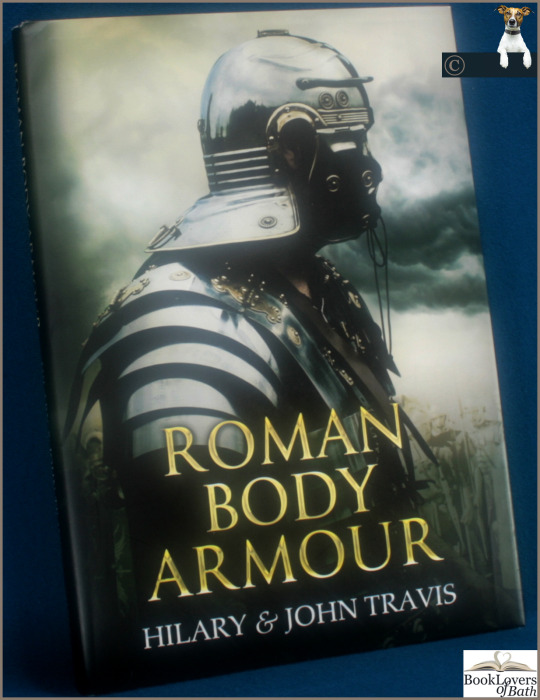
View On WordPress
#978-1-4456-0359-9#ancient armour#body armour#books by hilary & john travis#breastplate#cuirass upper shoulder guard#first edition books#girdle plates#history rome#hittite scales#kalkriese reconstruction#officer scale cuirass#roman army equipment#roman body armor#roman legionary#roman military history#samnite warriors#sarmatian cataphracts#scale armour#segmented armour
4 notes
·
View notes
Text
Linothroax designs in Hero Forge
So using the Padded Leather Tundra Pauldrons, I spent last night and part of this morning experimenting with possible hoplite linothorax armor designs. The results were pretty mixed, but there were four designs I was pretty okay with. All of these are works in progress, so feel free to chime in with feedback.

This one features the Warrior Princess ensemble, combined with the Leather Tundra Belt. https://www.heroforge.com/load_config%3D26614229/
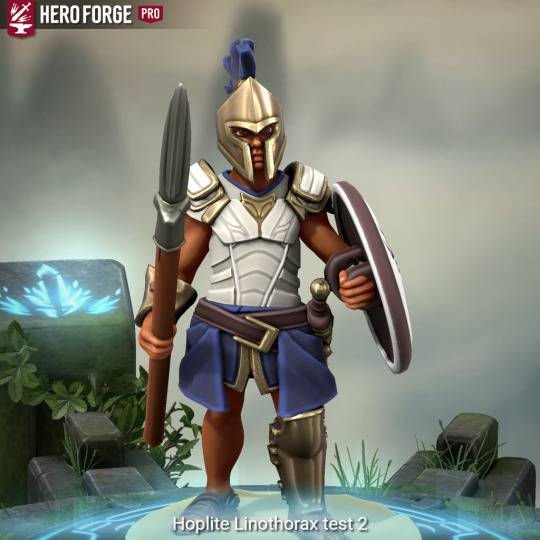
Test 2 features the Ornate Plate Chest Piece, which I’ve used for linothorax designs before. Though, I think the new pauldrons definitely improve the look. https://www.heroforge.com/load_config%3D27369385/
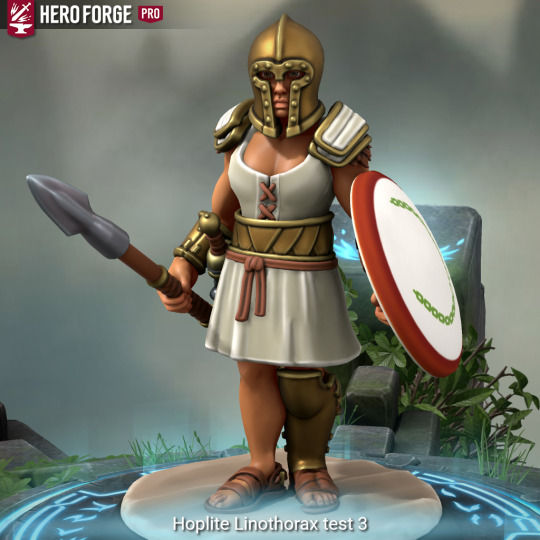
Test 3 uses the Bodice piece for a more basic look. Something for the yeoman hoplites, I suppose. https://www.heroforge.com/load_config%3D27379754/
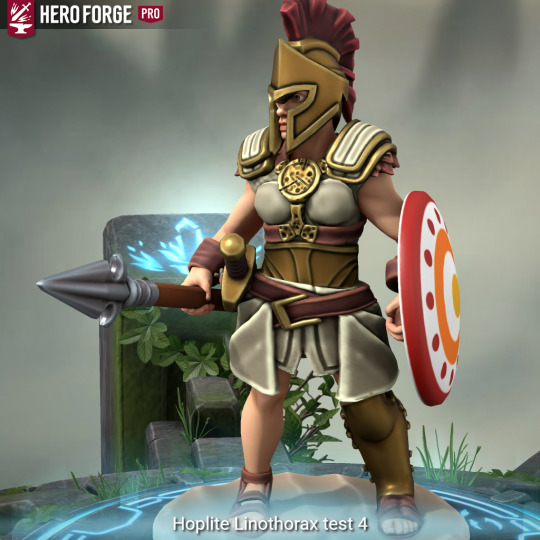
Test 4 combines the Ninja Top with the Hammered Metal Harness for more of an Illyrian- or Samnite-style hoplite ensemble. Still working on these, so I may post new versions and prototypes as I come up with them. Feedback is welcome! https://www.heroforge.com/load_config%3D27379921/
20 notes
·
View notes
Link
Act I Scene 1. ROMAN FORUM In the centre of the forum, there is a cage full of slaves, exhibited for the kicks of the crowd. Pompeius, a Roman general, appears in the carriage pulled by the slaves, Crixus and Spartacus.
Scene 2. BARRACKS Ares, the director of gladiators’ school, brings in some female slaves to entertain the enslaved warriors. Spartacus is charmed by one of them, Valeria, who returns his love. The attendants interrupt their meeting. Spartacus is enraged, but the forces are uneven.
Scene 3. PALACE Crassus is throwing a lavish feast. Together with courtesan Sabina, they are at the frontline of the bacchanalia. The guests urge for new entertainments. They are going to watch gladiators’ fights.
Scene 4. ARENA Crixus the Thracian defeats Pyrrhus the Nubian. Spartacus arrives among other Samnites and Thracians. At the end of the battle, Spartacus refuses to kill the last defeated rival and is about to leave the arena. However, he has broken the rules: Crassus’s soldiers rush to grab him, but Crassus delighted with his boldness stops them.
Scene 5. BARRACKS Crixus and Spartacus call for the riot: it is better to die as free people than to live in slavery. The gladiators charge onto the guards, take hold of their weapons and break free.
Scene 6. MT VESUVIUS Valeria and Spartacus see their first sunrise as free people. More and more people are coming to the camp of Spartacus: the fugitive slaves join the brave gladiators. Spartacus is chosen as their leader.
Act II Scene 7. FEAST AT SABINA’S PLACE The guards bring in the caught Crixus. Crassus challenges Crixus to fight with him and easily defeats the enslaved gladiator. Sabina seduces Crixus. Pompeius enraged by Sabina’s behavior leaves the villa. Suddenly Spartacus’s army storms in the palace. Crixus asks to have mercy upon all those present. Spartacus and Crixus argue. Spartacus and his warriors return to their camp.
Scene 8. SENATE The Senate is alarmed: the riot has embraced the whole Italy. Pompeius demands from Crassus prompt actions against Spartacus. Crassus laughs over the senators’ fears and promises to crash Spartacus and his gladiators.
Scene 9. SABINA’S ROOM Crassus and Sabina conceive a plot against Spartacus. They will ask Crixus to bring courtesans to the gladiators’ camp.
Scene 10. WOODS Shepherds are having fun with shepherdesses dressed like sheep. However, when the gladiators arrive, the shepherds choose to join the army of the rebels. Crixus brings the courtesans to the camp. Crassus and his people take advantage of the gladiators’ debauch and surround the camp. Crixus is desperate. He rushes to Spartacus and asks the gladiators’ leader to kill him. Spartacus refuses to do it and Crixus commits suicide.
Scene 11. BATTLEFIELD Spartacus finds out a numerous army is moving to his camp. The gladiator understands that the revolt is about to be crushed. He has no choice: it is better to die than to become a slave again.
Scene 12. BATTLE Spartacus is hemmed by the enemies. The revolt is crushed, gladiators are crucified. Valeria is mourning over Spartacus and his defeated brothers-in-arms.
#SpartacusBallet#Spartacus#khachaturianspartacus#khachaturianballet#khachaturian#ballet#theballet#balletvideos#bolshoiballet#classicalballet#russianballet#grandballet#dance
2 notes
·
View notes
Photo
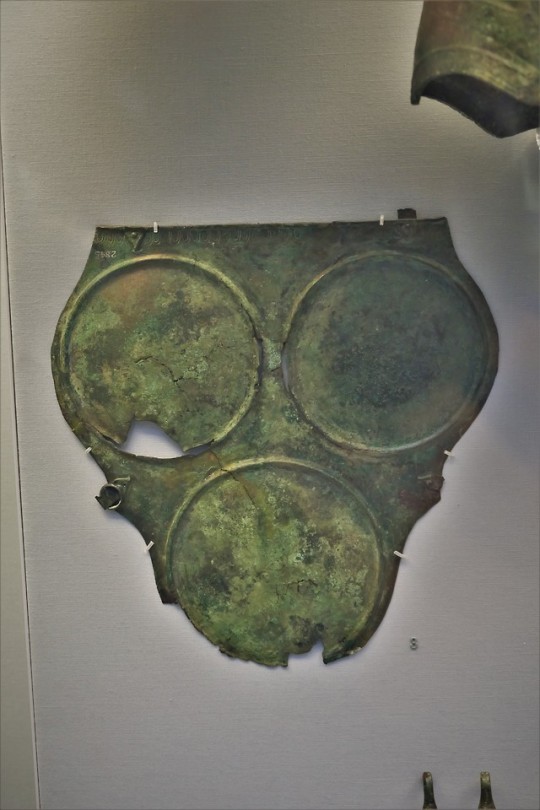
Bronze Triple-Disc Breastplate from Ruvo, Southern Italy dated between 400-300 BCE on display at the British Museum in London, England
This type of armour was worn by Samnite warriors and would have been matched with a backplate, side-plates and hinged shoulder plates. Livy notes that the Samnites wore two “types” of armour on the battlefield, half of them in silver and half in gold coloured armour. It was also noted that their Roman opponents did not “shine” as brightly as the Samnites in battle though this may be a romantic depiction of them in the literature.
Photographs taken by myself 2016
#armour#armor#fashion#archaeology#samnite#italy#italian#military history#iron age#ancient#british museum#london#barbucomedie
7 notes
·
View notes
Text

"Gli Oschi (detti anche Osci o Opici), erano una popolazione indoeuropea di origine sannitica, appartenenti al gruppo osco-umbro. Con gli Osci, si identificano storicamente una pluralitá di popoli dell'Italia meridionale, popoli dediti all'agricoltura, alla pastorizia e all'artigianato, i quali, anche se non avevano un'organizzazione politica e militare, erano ritenuti molto evoluti per quei tempi. La loro forza era rappresentata dall'omogeneitá culturale, visto che comuni erano le tradizioni e la lingua parlata che era quella osca. Gli Oschi non si opposero alle successive invasioni, disinteressandosi degli eventi bellici, ma non poterono evitare un graduale processo di integrazione ed assimilazione. Dal V secolo a.C. questa popolazione fu inglobata dai Sanniti, i due gruppi si fusero per divenire una sola cosa insieme, formarono un gruppo di guerrieri temibili che dettero filo da torcere ai Romani, basta ricordare la battaglia delle Forche Caudine, importante evento della seconda guerra sannitica, in cui i Sanniti sconfissero i Romani imponendo loro l'umiliazione di passare sotto i gioghi."
Who are the Oscans ?
"The Oschi (also called Osci or Opici) were an Indo-European population of Samnite origin belonging to the Osco-Umbrian group. Historically, the Osci are a plurality of people of southern Italy devoted to agriculture, pastoralism and crafts, and, even if they did not have political and military organization, they were considered very advanced for those times. Their strength was represented by the cultural homogeneity, since the traditions and the spoken language (Oscan) were common. The Oschi did not oppose the subsequent invasions, disinterested in war events, but they could not avoid a gradual process of integration and assimilation. This population was incorporated by the Samnites from the 5th century BC; the two groups merged to become one thing together; they formed a group of fearsome warriors who gave the Romans a hard time - just remembering the Forche Caudine battle, that was an important event of the second Samnite war, in which the Samnites defeated the Romans imposing on them the humiliation of going under the yokes".
0 notes
Text
Samnites - 388-385BCE
The Great Warriors continued on their path through Latium, capturing the town of Fregellae next. It was immediately after the capture of the town that the Samnites’ next great threat emerged, in greater strength than could have been predicted: the Hernici tribe.

While the Roman Republic had been partly pre-occupied by a war with the Sabines, their friends in the Hernici tribe had been left alone to expand their military. The Great Warriors, who’d successfully captured a succession of Roman towns, had been worn down to a significant extent, and were not prepared for a Hernici army of twice its size to attack. Despite trying to the last man, the defenders were unable to stop the Hernici. A second Hernici force which had not been weakened by the battle then went on to capture Casinum and Corfinium by storm, when there was no Samnite armuy in the area to do anything about it. The Widow Makers, previously stationed elsewhere, began recruiting elite infantry to stop the Hernici.


The Samnites had lost much to the Hernici, but they were now ready to respond with their own rebuilt forces. The Hernici attempted to cross the border into core Samnite territory, and they attacked the Widow Makers with a vastly numerically superior force - two whole armies versus one - but now the Hernici found themselves at a severe quality disadvantage. The Widow Makers, now a large army with excellent training built upon a backbone of elite Lucanian Swordsmen, was able to tear through the Hernici’s vast numbers. This victory prompted the Widow Makers to seize the town of Casinum. The Hernici regrouped their two armies and attempted to attack again, and once again their numbers failed them. Additionally, the Frentani in the north, a longtime friend of the Samnites, agreed to join the war against the Hernici.
At the same time, the southernmost Samnite town of Elea continued to bravely fend off attacks from both Croton and Taras, with the help of the Samnite navy.
A back-and-forth war with the Hernici continued, but ultimately the Hernici succumbed to the combined pressure of the Samnites and the Frentani. Meanwhile, however, Taras grew in strength as it slowly began to eliminate their enemies. At the same time, Neapolis, which had been confined only to the island city of Pithekousai, finally gathered the strength to try to attack the mainland. The attack came at Poseidonia, and Samnite forces in the nearby town of Elea had to be called upon to defend, which they did, narrowly. But the attack proved that Neapolis was indeed still a threat, and an invasion force was prepared. However, while forces in the south were busy defending Poseidonia, Elea fell to a Croton attack. Nevertheless, even as the threat in the south grew ever greater, it could be interpreted as a good sign for the Samnites that they no longer had to focus any military efforts in the north, now that the Frentani had to deal with the Roman threat.

1 note
·
View note
Photo

GoGo Hero: Survival Battle Royale
GoGo Hero: Survival Battle Royale
Game GoGo Hero: Survival Battle Royale là dòng game Action
Giới thiệu GoGo Hero: Survival Battle Royale
You will have a great experience with GoGo Hero - a survival battle royale game with fast-paced for mobile and PLAY FOR FREE Let’s play with friends or solo across a variety of fun modes in under 3 minutes. FEATURES - Choose your favorite characters - Play online: 12 players and 3-5 minute battles - Play so fun, free survival battle - Fight it out in survival arenas - Upgrade your characters - Enjoy free fun with friends or solo in multiplayer battle royale survival games - Become the battle royale adventure superstar in your town! CHARACTERS: Samnite Sagitarius Clavamus Chaser Bloodaxe Hoplomachus (Update more) GAME STORY: The story tells of the journey of a boy with his family moved to a new town in the '80s. Being unfamiliar with his new environment, when he discovered that there was a neighbor boy at the next door, he decided to find opportunities to get acquainted One day, following his friend into the woods near town, he found his friend being bullied, not thinking the boy rushed to help. Since then the two became best friends and the boy made many new friends. Children often play the role of warriors and battle play very happily. Especially the armor or weapons are made from close objects such as baseball rackets, catton covers, homemade slingshot ... and are completely self-made. GAMEPLAY TIPS: - Always in safe round - Upgrade characters - Collect items that fall from disqualified players for extra advantage Are you ready for an adventure with GoGo Hero? Let’s join!
Download APK
Tải APK ([app_filesize]) #gamehayapk #gameandroid #gameapk #gameupdate
0 notes
Photo

Samno-Attic Bronze Helmet, Late 5th-Early 4th Century BC
This type of helmet is so-called because of its close association with the Samnite warriors of central and southern Italy, and its derivation from the Greek Attic and Chalcidian type helmets. The form of any helmet was first and foremost functional, and its evolution was entirely dependent on the type of warfare fought and the cultural and artistic traditions of those who utilized it. Greek and Italic helmets of the fifth and fourth centuries BC, such as this example, evolved with new features to adapt to changing tactics in warfare, with the increasing importance of lighter equipment and tactical flexibility. This prompted the development of open-faced helmets, which gave the soldier greater visibility and ventilation with the inclusion of apertures for the ears. The Samno-Attic helmet was essentially a further development of the Chalcidian/Attic type that saw the disappearance of the nasal guard and a more spherical dome.
This incredibly well preserved Samno-Attic helmet retains its high-flung wings and hinged cheek-pieces, both remarkably still joined to the headpiece by the original rivets. The contoured dome was hammered from a single thick sheet, with fine carination bifurcating to a peak at the centre visor. The surface throughout displays an exuberant dense green patina that has developed over the last two millennia. The face is fully open, but for a short peaked vestigial nose-guard. This stylistic innovation gave the soldier greater visibility and ventilation, allowing for tactical flexibility and increased mobility. The helmet flares at the back along the short protective neck-guard and curves upwards to arched apertures to accommodate the soldier’s ears. The entire periphery, including the cheek-guards, is edged with small regular perforations which would have been threaded through to join a protective leather liner.
The helmet’s specific features indicate that it belongs to the earliest versions of the type, from the late fifth to early fourth century BC. The early examples are usually undecorated, emphasizing the helmet’s inherent beauty and simplicity of form. Some examples contain crest fixtures, removable holders in the form of bronze tubes or springs, sometimes hidden behind the wings or affixed transversely across the dome, which would originally have held brightly coloured feathers. A fresco from Nola, dating to the fourth century BC, depicts Samnite soldiers wearing Samno-Attic helmets featuring a variety of different crests (National Archaeological Museum, Naples, Inv. 9363).
Helmets of this type have been found predominantly in southern Italy, in Samno-Lucanian inhabited areas of the fifth to third centuries BC. They are closely associated with the Samnite panoply, which consisted of a triple-disc or muscled cuirass, a belt and greaves, several examples of which have been found in Campania and Puglia. The Samno-Attic helmet represents the most frequently depicted headgear in Samno-Lucanian tomb paintings and Campanian pottery wares. Controlling a large swathe of Italy, from coast to coast, the Samnites were a confederation of local native Italic tribes that migrated south from central Italy in the late fifth to early fourth century BC, moving into the coastal plains and eventually occupying the entire region from Campania to the southern tip of the Italian peninsula. In doing so, they mingled with other regional peoples and became highly influenced by Greek colonists who had already settled in the area. Their armour reflects this conflation of styles. The Samnites were formidable warriors and they proved to be one of early Rome’s great rivals. Reflecting their military prowess and perhaps out of respect, or fear, the Romans referred to them as belliger Samnis, the warrior Samnites. In fact, the Samnites fought three bloody wars against the Roman Republic, in 343-341 BC, 326-304 BC and 298-290 BC, until they were finally quashed by the expanding Roman state. It has been suggested that the disappearance of the Samno-Attic helmet and other culturally distinct features from the third century onwards was a marked feature of Rome’s domination of Italy.
Samno-Attic helmets can be found depicted in contemporary regional South Italian art, especially vase painting. For instance, three warriors armed in such helmets are shown on a red-figure hydria from Campania, attributed to the Ixion Painter and now in the Museum of Fine Arts, Boston (Inv. 1970.238, dating to the late fourth century BC). A soldier dons this type of helmet on the celebrated ‘Warrior’s Return’ fresco in the National Archaeological Museum, Paestum (Inv. 5626, early fourth century BC). Similar helmets are displayed in the National Archaeological Museum, Naples (Inv. 5741), the Louvre (Inv. 1129 C6968), and the Mougins Museum of Classical Art (Inv. 591). All are dated to the fifth to fourth century BC.
#history#samnite#samno-attic#helmet#armor#ancient#bronze#antiquities#italic#5th century bc#4th century bc
585 notes
·
View notes
Text
In what way are the Romans not a proud warrior culture? Military service was seen as glorious to the Romans, it was very hard to get anywhere in politics if you weren’t a general. They believed it was thier destiny to conquer the world. They even idolized the same Heracles that the Spartans did (it’s just that they called him Hercules.) they conduct elections in the Field of Mars, the god of war.
If anything it was because of thier proud warrior spirit that the Romans succeeded. Thier tenacity, thirst for battle and refusal to surrender got them through their perilous first few centuries. If it weren’t for this they would have been crushed by a myriad of enemies, the Samnites, Pyrrhos, the Carthaginians to name the most famous ones.
I think Sparta has a similar problem to Nazi Germany – aside from war crimes and slavery I mean – and that’s that people latch on to the cool aesthetic and legends of fighting prowess and are dismayed and reluctant to accept that it’s all bullshit, there has to be something there worth saving, and there really isn’t.
1K notes
·
View notes
Text
Events 8.19 (before 1920)
295 BC – The first temple to Venus, the Roman goddess of love, beauty and fertility, is dedicated by Quintus Fabius Maximus Gurges during the Third Samnite War. 43 BC – Gaius Julius Caesar Octavianus, later known as Augustus, compels the Roman Senate to elect him Consul. 947 – Abu Yazid, a Kharijite rebel leader, is defeated and killed in the Hodna Mountains in modern-day Algeria by Fatimid forces. 1153 – Baldwin III of Jerusalem takes control of the Kingdom of Jerusalem from his mother Melisende, and also captures Ascalon. 1458 – Pope Pius II is elected the 211th Pope. 1504 – In Ireland, the Hiberno-Norman de Burghs (Burkes) and Anglo-Norman Fitzgeralds fight in the Battle of Knockdoe. 1561 – Mary, Queen of Scots, aged 18, returns to Scotland after spending 13 years in France. 1604 – Eighty Years War: a besieging Dutch and English army led by Maurice of Orange forces the Spanish garrison of Sluis to capitulate. 1612 – The "Samlesbury witches", three women from the Lancashire village of Samlesbury, England, are put on trial, accused of practicing witchcraft, one of the most famous witch trials in British history. 1666 – Second Anglo-Dutch War: Rear Admiral Robert Holmes leads a raid on the Dutch island of Terschelling, destroying 150 merchant ships, an act later known as "Holmes's Bonfire". 1692 – Salem witch trials: In Salem, Province of Massachusetts Bay, five people, one woman and four men, including a clergyman, are executed after being convicted of witchcraft. 1745 – Prince Charles Edward Stuart raises his standard in Glenfinnan: The start of the Second Jacobite Rebellion, known as "the 45". 1745 – Ottoman–Persian War: In the Battle of Kars, the Ottoman army is routed by Persian forces led by Nader Shah. 1759 – Battle of Lagos: Naval battle during the Seven Years' War between Great Britain and France. 1772 – Gustav III of Sweden stages a coup d'état, in which he assumes power and enacts a new constitution that divides power between the Riksdag and the King. 1782 – American Revolutionary War: Battle of Blue Licks: The last major engagement of the war, almost ten months after the surrender of the British commander Charles Cornwallis following the Siege of Yorktown. 1812 – War of 1812: American frigate USS Constitution defeats the British frigate HMS Guerriere off the coast of Nova Scotia, Canada earning the nickname "Old Ironsides". 1813 – Gervasio Antonio de Posadas joins Argentina's Second Triumvirate. 1839 – The French government announces that Louis Daguerre's photographic process is a gift "free to the world". 1848 – California Gold Rush: The New York Herald breaks the news to the East Coast of the United States of the gold rush in California (although the rush started in January). 1854 – The First Sioux War begins when United States Army soldiers kill Lakota chief Conquering Bear and in return are massacred. 1861 – First ascent of Weisshorn, fifth highest summit in the Alps. 1862 – Dakota War: During an uprising in Minnesota, Lakota warriors decide not to attack heavily defended Fort Ridgely and instead turn to the settlement of New Ulm, killing white settlers along the way. 1903 – The Transfiguration Uprising breaks out in East Thrace, resulting in the establishment of the Strandzha Commune. 1909 – The Indianapolis Motor Speedway opens for automobile racing. William Bourque and his mechanic are killed during the first day's events.
1 note
·
View note
Text
Went to a Monoprint workshop
Yesterday morning I signed up for a Printmaking workshop that would last a few hours in which I made a Monoprint of a Samnite Gladiator.
To me the Gladiator represents someone that you can become through the use of a video game console (micro), and enter another world in which you battle against other warriors (macro).

It was fun to try out something different for once and I'd like to go back to do more in the future.
0 notes
Photo

I am a Roman citizen with Samnite origins - and I married an Etruscan...
There was a time in my country’s long history when nobody could have told which one of the major ethnic groups would have prevailed on the others. The most powerful were the Etruscans, the Latins, and the Samnites. Eventually the Latins (the Romans) took over the Etruscan lands and later, after a fierce resistance, they submitted the Samnites, too. The rest of the known world followed suit.
Some believe that Rome’s name comes from the Etruscan word for the Tiber river. It is possible the Etruscans founded (or co-founded) Rome. Some of the legendary seven kings of Rome were Etruscans. The Samnites, a tough mountain people of Sabin origins, were fierce warriors and the Romans imported their fighting tactics like the legion and their gladiator games (for a while gladiator and Samnite were used as synonyms).
I was born in Rome but my family’s origins are from the Central Apennines, a region that was once inhabited by the Samnites. My wife is from an area that used to be part of the Etruscan territory. So our son has got it all: he was born in Rome and has both Etruscan and Samnite ancestries. ;-)
0 notes